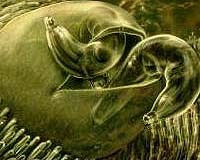A major public health issue and economic problem has been addressed in experiments carried out by researchers from the University Denis Diderot in Paris, and the VEOLIA Research Center in Maisons-Laffitte (France). Extremely chlorine-resistant parasites, known as Cryptosporidium, which cause a diarrheal disease in humans and can lead to significant mortality in immunodeficient patients, become virtually inactive when exposed to industrial UV reactors.
Human contamination of this waterborne disease, known as cryptosporidiosis, occurs by ingestion of the resistant form of the parasite, either directly through person-to-person and animal-to-person routes or indirectly through environmental vehicles including water, food or soil. Contamination of water resources for drinking water supplies, as well as inadequate water treatment can be responsible for large cryptosporidiosis outbreaks. Up until now, there has been no efficient curative treatment, making it one of the most common causes of waterborne disease within humans in the United States.
Thanks to collaboration between researchers at the Laboratory of Parasitology of the University Denis Diderot, and the VEOLIA Research Center, the efficacy of UV light was demonstrated in large scale tests with pilot equipment. The study was designed for spiking experiments in which water was experimentally contaminated with large amounts of Cryptosporidium oocysts then passed through the UV reactors. The efficacy of medium-pressure and low-pressure UV reactors (UVaster*) used in the water industry was then assessed using a sensitive cell culture method developed by Emilio Entrala and used by Professor Francis Derouin's team in the Denis Diderot's University Laboratory of Parasitology.
The article published in FEMS Immunology and Medical Microbiology, a journal of the Federation of European Microbiological Societies, describes how replicate experiments successfully achieved inactivation rate of >99.998% with both reactors. These results confirm the remarkable efficacy of both polychromatic medium-pressure and monochromatic low-pressure UV lamps in conditions that are close to that of many small- or medium-size water distribution units.
According to Dr. Cedric Feliers, who led the study conducted for the VEOLIA Research Center "These tests, made in near real conditions, confirm that these industrial UV reactors could prevent waterborne outbreaks and secure water supply to customers."

